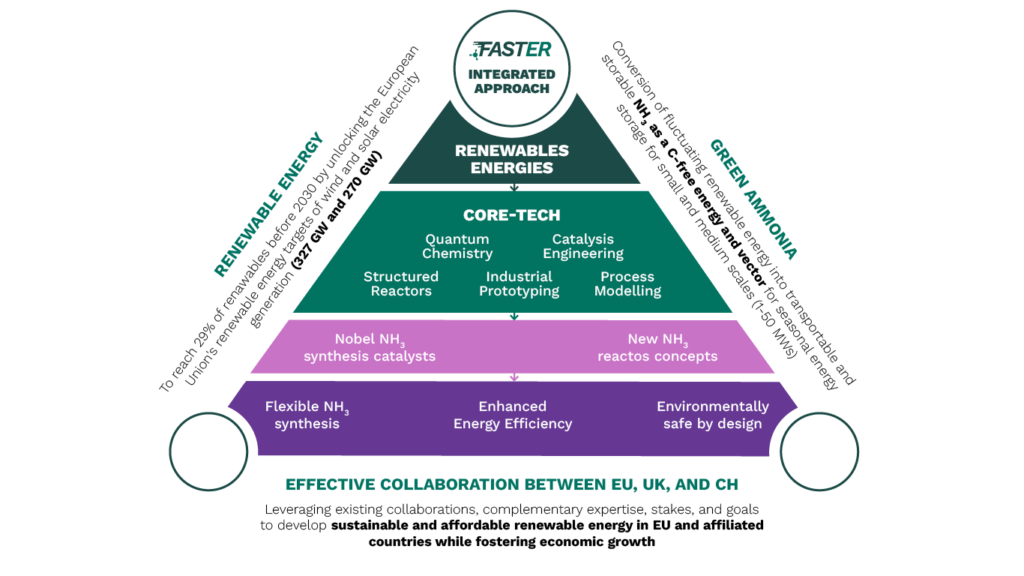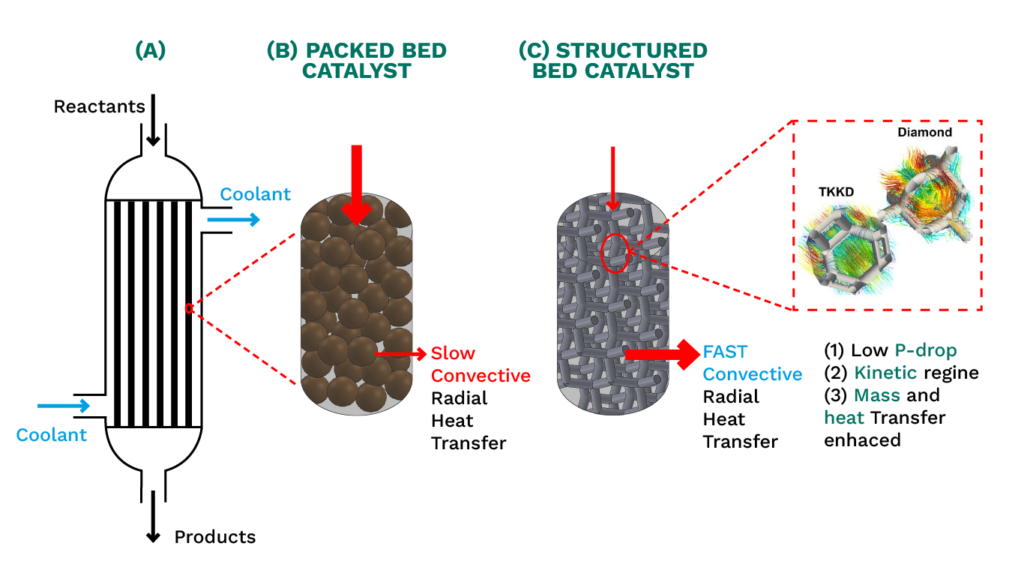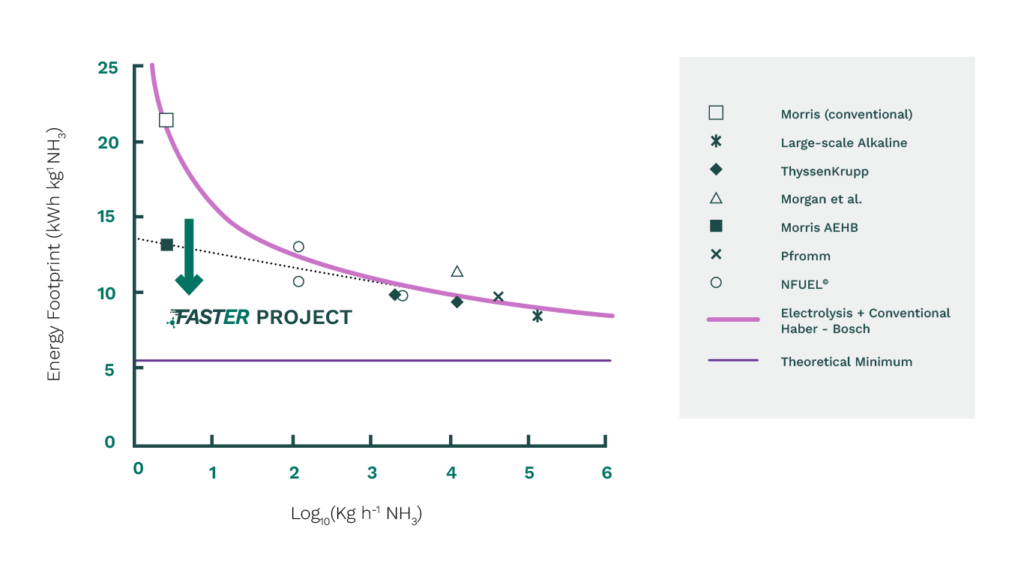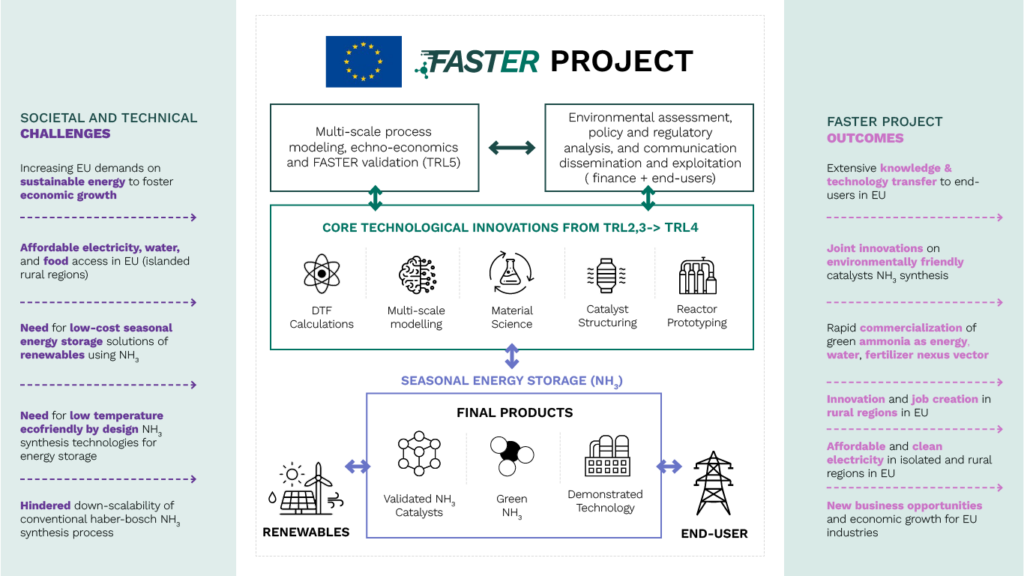FASTER TECHNOLOGIES
The FASTER consortium aims to develop:
- A novel catalyst highly active at low temperature and pressure for ammonia synthesis
- A heat and mass transport reactor concepts using structured reactors and absorbers
- Software tools coupling static, dynamic and microkinetic simulations for fast discovery of improved catalysts formulations for ammonia synthesis
- A reactor prototype designed for flexible synthesis of NH3 based on newly formulated catalysts and structured Absorption Enhanced Haber-Bosch (AEHB) technology
- A demonstration installation for the FASTER technology
- An accurate and reliable techno-economic models to identify suitable locations to deploy the concept across Europe and beyond
A comprehensive environmental, economic and social impact analyses will be performed through Life Cycle Thinking method (LCA, LCC, S-LCA).

OBJECTIVES OF THE FASTER PROJECT
The FASTER project aims to achieve ambitious technological objectives:
Explore, predict, and rationalise catalytic activities for NH3 synthesis based on atomistic simulations and microkinetic analyses
Discover non-noble transition metal catalysts supported on electron donating supports capable of activating nitrogen under mild conditions
Tailor the structured internals for NH3 synthesis and absorption for enhanced heat and mass transport in mild temperature and pressure conditions
Implement an AEHB in the NH3 synthesis process capable of operating at 0-100% load variations using structured internals (reactor and absorber)


To contribute to the development of a new sustainable green ammonia economy, the following socio-economic objectives has been set:
Develop a new NH3 economy by connecting leading institutions and businesses, sparking carbon neutrality in the energy sector and affordable and secure electricity access
Establish a multi-stakeholder platform comprising businesses, relevant government organizations, NGOs, and European local communities
Ensure long-term acceptance in the EU by conducting intensive dissemination and communication activities on policy and recommendations
Identify the educational and vocational training and capacity building required to operate the commercial versions of the FASTER technology
EXPECTED BENEFICIAL IMPACTS OF THE FASTER PROJECT
The activity of the FASTER project is expected to produce a set of beneficial impacts for health, climate change, environmental, social, and economic development in the EU:
- Contributing to replace of fuel fossil and coal-powered electricity to green ammonia-based electricity
- Extending the use of renewables in previously inaccessible locations
- Improving air quality
- Reducing CO2 emissions in Europe
- Job creation
- Facilitating energy storage and conversion in islanded locations, where access to clean electricity is difficult, for example on islands and in rural areas
